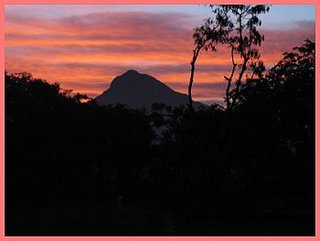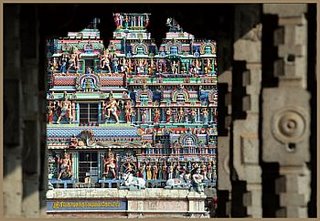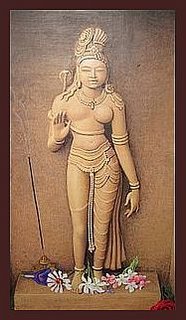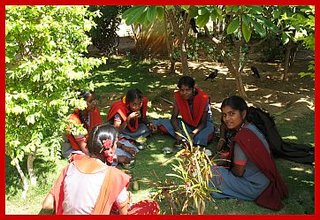On Christmas day I decided to do giripradakshina around Arunachala as it had been quite sometime since I last walked around the Hill. I live in the countryside and am surrounded by fields and an agricultural landscape and also have a wonderful view of Arunachala. Because I live in such idyllic surrounds, I usually prefer quiet solititude to the more energetic rounding of Arunachala. But being that it was a such a special Holiday, and the sky was almost violet in its intense blueness, the sun bright and warm and the Holy Hill glistening in its shimmering efflugence; it seemed the perfect time to get re-acquainted with the ritual of giripradakshina.
I took my camera to record some of the sights of the afternoon. Here is a young boy in front of the Anjaneya Temple (Anjaneya is the monkey God famous for being a great devotee of Lord Rama). The lad's mother and father are close by, involved in the same pursuit i.e., the making of Tulsi malas. The aroma of Tulsi is very sweet and when one handles it, it leaves a strong, sweet scent on the skin. As its Christmas, schools are out for a week, so the young lad is helping his family for the day.
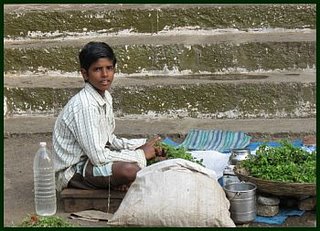
Below is one of the rest-a-while parks that are dotted around the fringe of the pradakshina pathway. Unfortunately the parks nearly always seem to be locked, maybe the park caretakers don't trust us enough to keep the park clean in their absence! A Bonnet Macaque monkey is hanging around in front of the park. At the beginning of my walk I bought a large bag of rusk bread for the monkeys and dogs but ran out of supplies quickly and had to purchase more on the way.
Please do remember if you feed the monkeys to throw the food off the road. Even though it is easier for them to pick up food from the tarred roads, doing so makes the monkeys lose their fear of the street and so leads to accidents. The monkeys are tame and generally very well mannered.
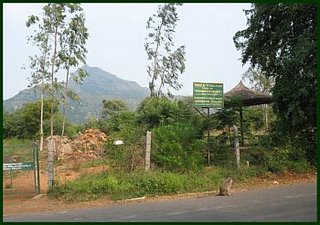
These two kids are visiting Tiruvannamalai for the first time with their Mother. They hail from Chennai and were particularly proud of their nice, new tonsures from the Arunachaleswarar Temple.
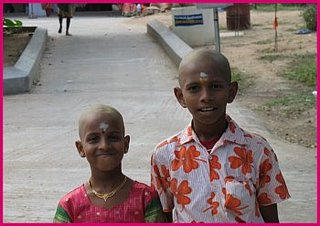
Unfortunately nobody keeps to the recommendations either regarding the use of the horn or speed restriction. Hopefully when the ring road finally gets built heavy traffic will no longer use the giripradakshina pathway.
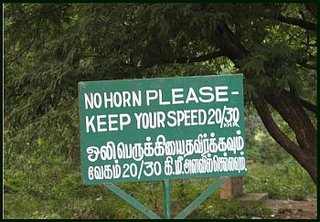
What you see below is becoming increasingly common on the giripradakshina road. About 10 years ago the pathway was unlighted and in a narrow and poor, rutted condition. Even though the intentions were kind hearted, the consequences of widening the road and providing bright lighting, has had unfortunate consequences. Because now pilgrims do not have right-of-way and are consistently pushed to the side of the road by speeding trucks and buses. This situation unfortunately doesn't improve during the evenings and nights because sadly, as the lighting is so excellent, heavy traffic constantly travels on the road.
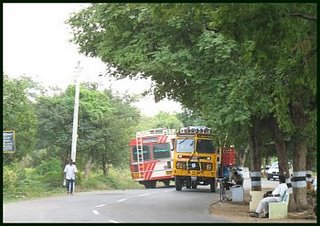
This decorated tree is a new item. In India ladies like to ornament special trees (specially located at shrines or holy spots) with personal items like bangles or auspicious threads in performance of a vow. I think this particular tree has been helped along by some enterprising folk who thereafter take up a nearby perch and sell items such as camphor and small clay plates, so that pilgrims can perform aarti (the waiving of light) to the tree.

Parents love to dress their children up like dollies. This little girl looks adorable with her bangles, flowers and necklace. The Mother, who was standing next to the child as I took the picture, was delighted that her beautiful angel was being admired and photographed.
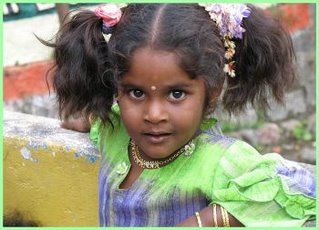
These gents are devotees of the God, Iyyapan. They are on their way to the famous Iyyapan Temple at Sabrimala. The journey to the Iyyapan Temple is almost as important as what happens once the pilgrim arrives. It is traditional that the journey itself is a pilgrimage, and devotees on their way to Sabrimala will stop off at designated shrines, holy places, saints or sadhus to perform different worships. A unique aspect of Sabrimala, is that there is a sex restriction. Gents are allowed, but as to ladies, only girls or older ladies are allowed to visit and ladies of childbearing age are not welcomed.
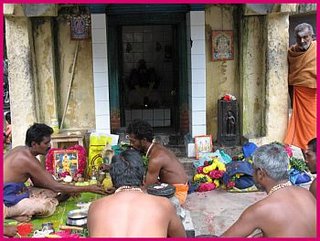
Just a few snaps to remember my Christmas Day walk around the Hill.
